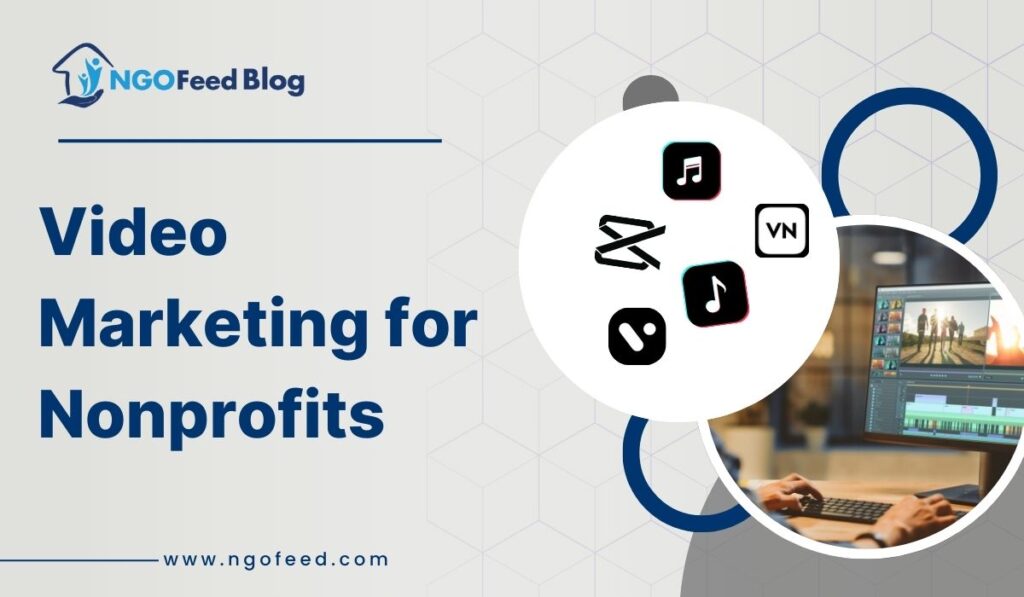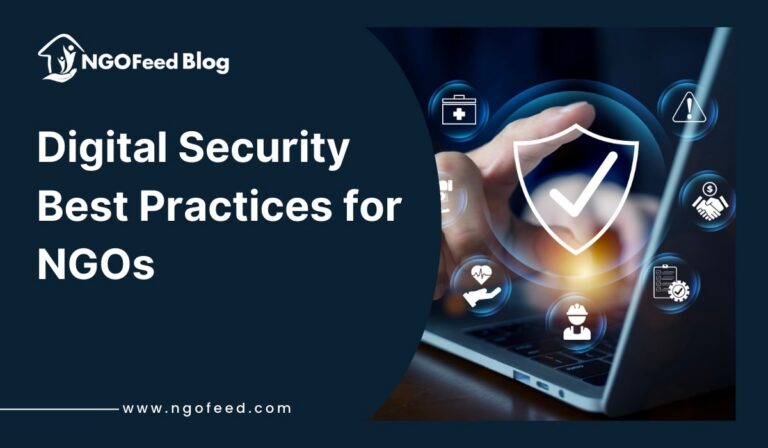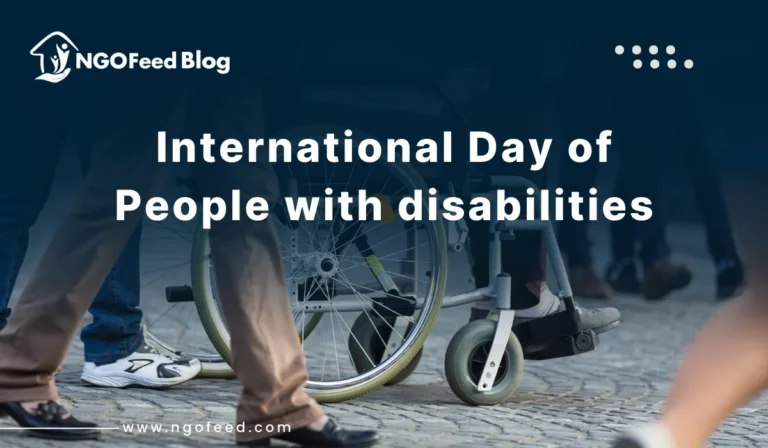Video Marketing for Nonprofits: In today’s visually saturated digital landscape, attention spans are fleeting, and audiences are increasingly drawn to dynamic and engaging content. For nonprofit organizations striving to connect with donors, volunteers, and beneficiaries, video marketing has emerged as an indispensable tool. Moving beyond static images and text-heavy narratives, video offers a powerful medium to showcase impact, evoke emotion, build trust, and ultimately, drive meaningful action.
This article delves into the multifaceted world of video marketing for nonprofits, exploring its numerous benefits, diverse applications, strategic planning, production considerations, distribution channels, measurement metrics, and the ethical considerations that underpin its effective use.
Table of Contents
The Compelling Case for Video Marketing in the Nonprofit Sector
Video possesses a unique ability to transcend the limitations of other content formats, offering nonprofits a compelling way to communicate their mission and impact:
- Enhanced Emotional Connection: Video can evoke empathy and connect with viewers on a deeper emotional level through visuals, sound, and storytelling. Seeing the faces of beneficiaries, hearing their stories firsthand, and witnessing the impact of a nonprofit’s work can be far more impactful than simply reading about it.
- Increased Engagement and Attention: In a crowded online environment, video stands out and captures attention more effectively than static content. Viewers are more likely to watch a short video than read a lengthy text post, leading to higher engagement rates and increased time spent with the organization’s message.
- Improved Comprehension and Retention: Visual and auditory information is processed more efficiently by the brain, leading to better comprehension and retention of the message. Video can simplify complex issues, explain intricate programs, and make abstract concepts more tangible.
- Humanizing the Cause: Video allows nonprofits to put a human face on their work, showcasing the individuals they serve, the dedicated staff and volunteers, and the real people behind the mission. This humanization builds trust and reliability.
Also Read: How to Host Successful Nonprofit Events
- Increased Shareability and Reach: Compelling videos are more likely to be shared across social media platforms and other online channels, significantly expanding the nonprofit’s reach and introducing its mission to new audiences.
- Versatility Across Platforms: Video content can be adapted and repurposed for various online platforms, including websites, social media, email marketing, and crowdfunding campaigns, maximizing its impact and efficiency.
- Boosting SEO and Website Traffic: Websites with embedded videos tend to have higher dwell times and lower bounce rates, which are positive signals for search engines, potentially leading to improved SEO rankings and increased organic traffic.
- Demonstrating Transparency and Accountability: Video can offer a transparent look into a nonprofit’s operations, showcasing how donations are used and the impact they are having on the ground, fostering trust and accountability with donors.
Diverse Applications of Video Marketing for Nonprofits
Nonprofits can leverage the power of video in numerous ways to achieve their various objectives:
- Impact Stories: Short, compelling videos that showcase the real-life impact of the nonprofit’s work through the stories of beneficiaries. These videos can highlight challenges faced, the intervention provided, and the positive transformation achieved.
- Mission Explainer Videos: Concise videos that clearly articulate the nonprofit’s mission, values, and the specific problems it addresses. These can be animated or feature interviews with key staff members.
- Fundraising Appeals: Emotional and persuasive videos that make a direct appeal for donations, often highlighting urgent needs or specific projects. These videos can feature beneficiaries, staff, or even celebrity endorsements.
- Volunteer Recruitment Videos: Engaging videos that showcase the rewarding experiences of volunteering with the organization, highlighting different volunteer roles and the impact volunteers can make.
Also Read: First Party Data for Nonprofit
- Event Promotion Videos: Dynamic videos that build excitement and provide essential information about upcoming fundraising events, awareness campaigns, or community gatherings.
- “Behind the Scenes” Videos: Authentic videos that offer a glimpse into the daily operations of the nonprofit, showcasing the dedication of staff and volunteers and building trust through transparency.
- Thank You Videos: Personalized or general videos expressing gratitude to donors, volunteers, and supporters, reinforcing the value of their contributions.
- Educational Videos: Informative videos that raise awareness about the cause the nonprofit champions, explaining complex issues in an accessible and engaging way.
- Advocacy Videos: Powerful videos that urge viewers to take action on policy issues, such as signing petitions, contacting lawmakers, or participating in campaigns.
- Testimonial Videos: Videos featuring testimonials from beneficiaries, donors, or volunteers, adding credibility and social proof to the nonprofit’s claims.
- Live Videos and Webinars: Real-time video content that allows for direct interaction with the audience, fostering a sense of community and providing opportunities for Q&A.
Strategic Planning for Effective Nonprofit Video Marketing
Creating impactful video content requires careful planning and a strategic approach:
- Define Clear Objectives: What do you want to achieve with your video? Increase donations, recruit volunteers, raise awareness, or drive event attendance? Clearly defined objectives will guide your content creation and measurement.
- Identify Your Target Audience: Who are you trying to reach with your video? Understanding their demographics, interests, and online behavior will inform your messaging, tone, and platform selection.
- Develop a Compelling Narrative: Every effective video tells a story. Craft a narrative that resonates with your audience, evokes emotion, and clearly communicates your message. Focus on human-centered stories that highlight impact.
- Determine Your Budget and Resources: Video production can range from simple smartphone recordings to professional shoots. Assess your available budget, equipment, and personnel to determine the scope and quality of your videos.
Also Read: How To Measure Social Media ROI For Nonprofits?
- Choose the Right Video Format: Select a video format that aligns with your objectives, target audience, and platform. Short, impactful stories work well on social media, while longer, more detailed videos might be suitable for your website or email campaigns.
- Craft a Strong Call to Action: What specific action do you want viewers to take after watching your video? Make your call to action clear, concise, and visually prominent.
- Plan Your Distribution Strategy: Where will you share your video to reach your target audience effectively? Consider your website, social media platforms, email lists, and potential partnerships.
- Develop a Measurement Plan: How will you track the success of your video? Identify key metrics such as views, engagement rates, website clicks, donations, or volunteer sign-ups.
Production Considerations for Nonprofit Videos
Producing effective videos doesn’t always require a large budget, but attention to quality is crucial:
- Keep it Concise and Engaging: In today’s fast-paced digital world, aim for shorter videos that quickly capture attention and deliver your message effectively. The first few seconds are critical.
- Prioritize High-Quality Visuals and Audio: Even with a limited budget, ensure your video has clear visuals and good audio. Poor quality can detract from your message and damage your credibility.
- Tell Authentic and Human Stories: Focus on genuine stories of impact and the real people involved in your work. Authenticity resonates with viewers and builds trust.
- Use Emotion Effectively: Tap into the emotions of your audience to create a connection and motivate action. However, avoid manipulative or overly sentimental content.
- Incorporate Your Branding: Subtly integrate your logo and brand colors to reinforce your organization’s identity.
- Optimize for Mobile Viewing: Many viewers will watch your video on their smartphones, so ensure it is formatted and optimized for mobile devices (e.g., vertical video, clear captions).
- Include Captions and Transcripts: Make your videos accessible to a wider audience, including those who are hearing impaired or watching without sound. Captions also improve SEO.
- Consider Accessibility: Ensure your video content is accessible to individuals with disabilities by following accessibility guidelines for visuals, audio, and controls.
Also Read: SEO Strategies For NGOs
Strategic Distribution Channels for Nonprofit Videos
Reaching your target audience requires a well-defined distribution strategy:
- Your website: Embed videos on relevant pages of your website, such as your homepage, impact page, donation page, and program pages.
- Social Media Platforms: Share your videos across your social media channels, tailoring the content and format to each platform’s best practices. Utilize features like Facebook and Instagram Stories, Reels, and live video.
- Email Marketing: Include compelling video thumbnails and links in your email newsletters and fundraising appeals to increase engagement and click-through rates.
- YouTube and Vimeo: Host your videos on platforms like YouTube and Vimeo to expand your reach and make them easily shareable. Optimize your video titles, descriptions, and tags for search.
- Crowdfunding Platforms: Integrate videos into your crowdfunding campaigns to tell your story and make a compelling case for support.
- Partnerships and Collaborations: Share your videos with partner organizations and influencers who can help you reach a wider audience.
- Paid Advertising: Consider using paid social media advertising or YouTube ads to target specific demographics and interests with your video content.
Measuring the Impact of Nonprofit Video Marketing
Tracking the right metrics is essential to evaluate the effectiveness of your video marketing efforts:
- Views and Reach: How many people are watching your video and how far is it spreading?
- Engagement Rates: How are viewers interacting with your video (likes, comments, shares)?
- Click-Through Rates (CTR): Are viewers clicking on the links in your video description or call to action?
- Website Traffic: Is your video driving traffic to your website?
- Conversion Rates: Are viewers taking the desired action, such as donating, volunteering, or signing up for your newsletter?
Also Read: Email Automation For NGOs
- Time Watched/Audience Retention: How much of your video are people watching? This indicates engagement and interest.
- Sentiment Analysis: Analyse comments and feedback to understand how viewers are reacting to your video.
- Utilize analytics tools provided by social media platforms and video hosting sites to track these metrics and gain insights into what resonates with your audience.
Ethical Considerations in Nonprofit Video Marketing
Maintaining ethical standards is paramount when creating and sharing video content:
- Authenticity and Transparency: Ensure your videos accurately represent your work and the people you serve. Avoid exaggeration or misleading portrayals.
- Respect and Dignity: Treat beneficiaries and their stories with respect and dignity. Obtain informed consent before featuring individuals in your videos.
- Avoid Exploitation: Be mindful of not exploiting vulnerable individuals or their situations for emotional impact. Focus on empowerment and hope.
- Data Privacy: Be transparent about how you collect and use any personal data obtained through your video marketing efforts.
- Accuracy and Fact-Checking: Ensure all information presented in your videos is accurate and verifiable.
- Cultural Sensitivity: Be aware of and respect cultural nuances and sensitivities in your messaging and visuals.
- Responsible Fundraising Appeals: While evoking emotion is important, avoid manipulative or high-pressure fundraising tactics in your videos.
Also Read: Leveraging (X) Twitter Trends for Nonprofits
Conclusion: Embracing the Visual Power of Video for Good
Video marketing offers an unparalleled opportunity for nonprofits to connect with their audiences on a deeper level, amplify their message, and drive meaningful action. By strategically planning, producing high-quality content, distributing effectively, and measuring impact, nonprofits can harness the power of video to raise awareness, inspire generosity, recruit volunteers, and ultimately, advance their vital missions. In an increasingly visual world, embracing video is not just a trend; it’s a necessity for nonprofits seeking to thrive and create lasting positive change. By telling authentic stories, showcasing impact, and upholding ethical standards, nonprofits can use the magic of video to illuminate their cause and inspire a world of good.









